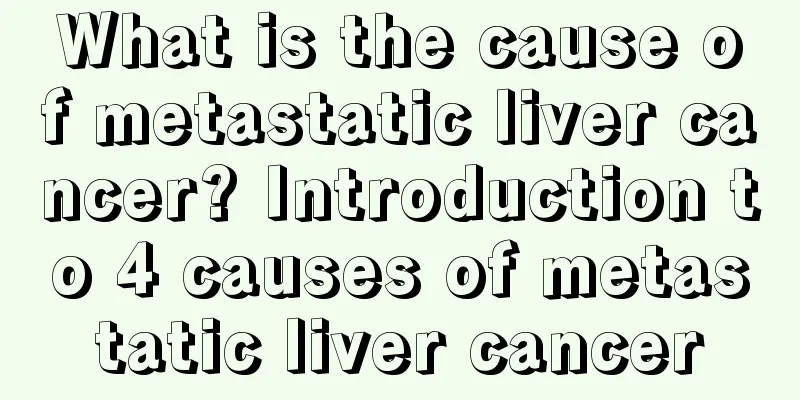What to do if you have heart failure?

|
As people's living standards improve, they lack exercise and gradually develop various health problems, including diseases such as heart failure. The reason for heart failure is that the myocardium is damaged, which makes the heart unable to normally discharge blood to supply the normal activities of the human body, causing ischemia and disorder of various organs of the human body, and the heart gradually becomes larger. When heart failure occurs, the patient should not move around and should sit in a semi-recumbent or sitting position. This can alleviate the symptoms of dyspnea. If sweating occurs, the patient should keep warm. So what should we do in the event of heart failure? 1. Symptoms of heart failure Heart failure is caused by various reasons that cause the heart muscle to be unable to effectively pump blood out of the heart, causing ischemia, congestion and organ dysfunction in various organs throughout the body. This is heart failure. The most common cause of heart failure is damage to the myocardium itself, such as myocardial infarction. During a myocardial infarction, part of the heart muscle dies and cannot contract, and the heart loses its function of "supplying blood". Other diseases, such as long-term hypertension, myocarditis, cardiomyopathy, rheumatic heart disease, etc. can eventually cause heart failure. The most typical symptoms of heart failure are palpitations and shortness of breath after activity. A normal person will feel his heartbeat quicken and become a little breathless after walking up 3-5 flights of stairs, but he will be fine after resting for a while. But this is not the case for patients with heart failure. After walking up a few flights of stairs, I felt severely short of breath and my heart seemed to be jumping out of my throat. Even after resting for 20-30 minutes, I still felt short of breath and difficulty breathing, and my heart rate even kept getting faster and faster. When the condition worsens, people will become short of breath even when walking on flat ground, which is medically known as "exertional dyspnea." 2. Heart failure Heart failure, also known as "myocardial failure", refers to the inability of the heart to pump out a blood supply commensurate with venous return and body tissue metabolism. Various diseases often cause the myocardial contractility to weaken, thereby reducing the heart's blood output, which is insufficient to meet the body's needs, and thus produces a series of symptoms and signs. Heart valve disease, coronary artery sclerosis, hypertension, endocrine diseases, bacterial toxins, acute pulmonary infarction, emphysema or other chronic lung diseases can all cause heart disease and produce symptoms of heart failure. Pregnancy, fatigue, rapid intravenous fluid replacement, etc. can increase the burden on the diseased heart and induce heart failure. Heart failure is divided into left heart failure and right heart failure. The main symptoms of left heart failure are fatigue, dyspnea, which initially occurs during exertion and eventually develops into dyspnea at rest, and the patient can only breathe while sitting up. Paroxysmal dyspnea is a typical manifestation of left heart failure, which often occurs during deep sleep and is characterized by chest tightness, shortness of breath, cough, and wheezing. In particularly severe cases, it can develop into acute pulmonary edema with symptoms of severe wheezing, orthopnea, extreme anxiety, and coughing up foamy mucus (typically pink foamy sputum), cyanosis, and other symptoms of lung congestion. The main manifestations of right heart failure are lower limb edema, distended neck veins, loss of appetite, nausea and vomiting, oliguria, nocturia, and separation of drinking and urination. The main signs are moist rales at the lung bases or throughout the lungs, hyperactive second sound of the pulmonary valve, gallop rhythm and alternating pulse, hepatomegaly, positive hepatojugular reflux, and X-ray examination mainly showing enlargement of the left ventricle or left atrium. Laboratory examinations show that left heart failure is accompanied by prolonged brachial tongue time and increased pulmonary artery capillary wedge pressure measured by a floating catheter; right heart failure is accompanied by prolonged brachial pulmonary time and significantly increased venous pressure. 3. Dietary treatment of heart failure 1) Limit sodium salt intake: To prevent and reduce edema, a low-salt, salt-free, or low-sodium diet should be selected according to the condition of the disease. Low salt means 2 grams of table salt for cooking per day; the sodium content of table salt is 391 mg/g, or equivalent to 10 ml of soy sauce. The sodium content of side dishes per day should be less than 1500 mg. Salt-free: no salt or soy sauce is added during cooking, and the sodium content in the main and side dishes throughout the day is less than 70 mg. Low sodium means that except for not adding salt and soy sauce during cooking, foods with sodium content below 100 mg% should be used, and the sodium content of staple and non-staple foods throughout the day should be less than 500 mg. When taking large amounts of diuretics, the amount of salt should be increased appropriately to prevent hyponatremia syndrome. (2) Limit water intake: Water retention in congestive heart failure is mainly secondary to sodium retention. While the body retains 7 grams of sodium chloride, 1 liter of water must be retained to maintain the balance of osmotic pressure in the body. Therefore, when adopting a low-sodium diet, there is no need to strictly limit water intake. In fact, fluid intake can promote urination and reduce subcutaneous edema. Foreign scholars believe that while strictly limiting sodium salt intake, if 2000-3000 ml of water is consumed daily, the net excretion of sodium and water can be higher than when the daily intake is 1500 ml, but when it exceeds 3000 ml, the net excretion of sodium and water cannot be increased. Taking this situation into consideration, and the fact that excessive fluid intake can increase the circulatory burden, domestic scholars advocate limiting the fluid intake for general patients to 1000-1500 ml per day (2000-3000 ml in summer), but it should vary according to the condition and individual habits. For patients with severe heart failure, especially those with impaired renal function, due to reduced water excretion capacity, water intake must be properly controlled while taking a low-sodium diet, otherwise it may cause dilutional hyponatremia, which is one of the important causes of refractory heart failure. Once this happens, it is advisable to limit fluid intake to 500-1000 ml and use medication. (3) Potassium intake: As mentioned earlier, potassium imbalance is one of the most common electrolyte disorders in congestive heart failure. The most common clinical condition is potassium deficiency, which mainly occurs due to insufficient intake (such as malnutrition, lack of appetite and malabsorption), additional loss (such as vomiting, diarrhea, malabsorption syndrome), renal loss (such as kidney disease, hyperadrenocortical function, metabolic alkali poisoning, diuretic therapy) and other conditions (such as parenteral nutrition, dialysis, etc.). Potassium deficiency can cause intestinal paralysis, severe arrhythmia, respiratory paralysis, etc., and can easily induce digitalis poisoning, resulting in serious consequences. Therefore, patients who are taking diuretics for a long time should be encouraged to eat more foods and fruits with high potassium content, such as bananas, oranges, dates, papayas, etc. If necessary, potassium supplementation should be given, or potassium excretion can be used in combination with potassium-sparing diuretics, or with diuretic Chinese herbal medicines with high potassium content, such as Centella asiatica, Alfalfa, Akebia, Prunella Vulgaris, Achyranthes bidentata, Corn Silk, Houttuynia cordata, Poria, etc. |
<<: What are the best ways to remove formaldehyde during decoration?
>>: What are the dangers of spoiling children?
Recommend
Where does frozen shoulder hurt? Symptoms of frozen shoulder
The pain of frozen shoulder is very painful for m...
What should I do if my arm is burned
In daily life, we cannot live without hot water, ...
Decreased immunity and skin allergies
There are many reasons for skin allergies. The mo...
Does nasopharyngeal carcinoma of keratinized differentiation type have a high degree of deterioration? What to eat during radiotherapy?
In daily life, patients with nasopharyngeal cance...
What is the reason for sweating while sleeping?
If any of your friends sweat while sleeping, it m...
Will it hurt to clear the fallopian tubes?
Fallopian tube obstruction is a common and freque...
The most common early symptoms of bone cancer
There are many bone cancer patients in life, and ...
Is chemotherapy necessary for advanced lung cancer?
Is chemotherapy necessary for advanced lung cance...
Can rectal cancer be cured if it spreads?
The occurrence of rectal cancer has seriously aff...
What's the matter with the spots on the ears
Spots are a common clinical problem, which is als...
The bronchitis cough relief method is simple and effective!
Bronchitis is a relatively common respiratory inf...
When is the best time to run for exercise?
There are many kinds of sports for physical exerc...
What is the applicable scope of gastric cancer radiotherapy? Pay attention to these
Radiotherapy is a method of treating gastric canc...
High parathyroid hormone and dialysis
The secretion of thyroid hormone is a dynamic pro...
Which is more serious, lung cancer or pancreatic cancer?
Lung cancer and pancreatic cancer are both malign...









